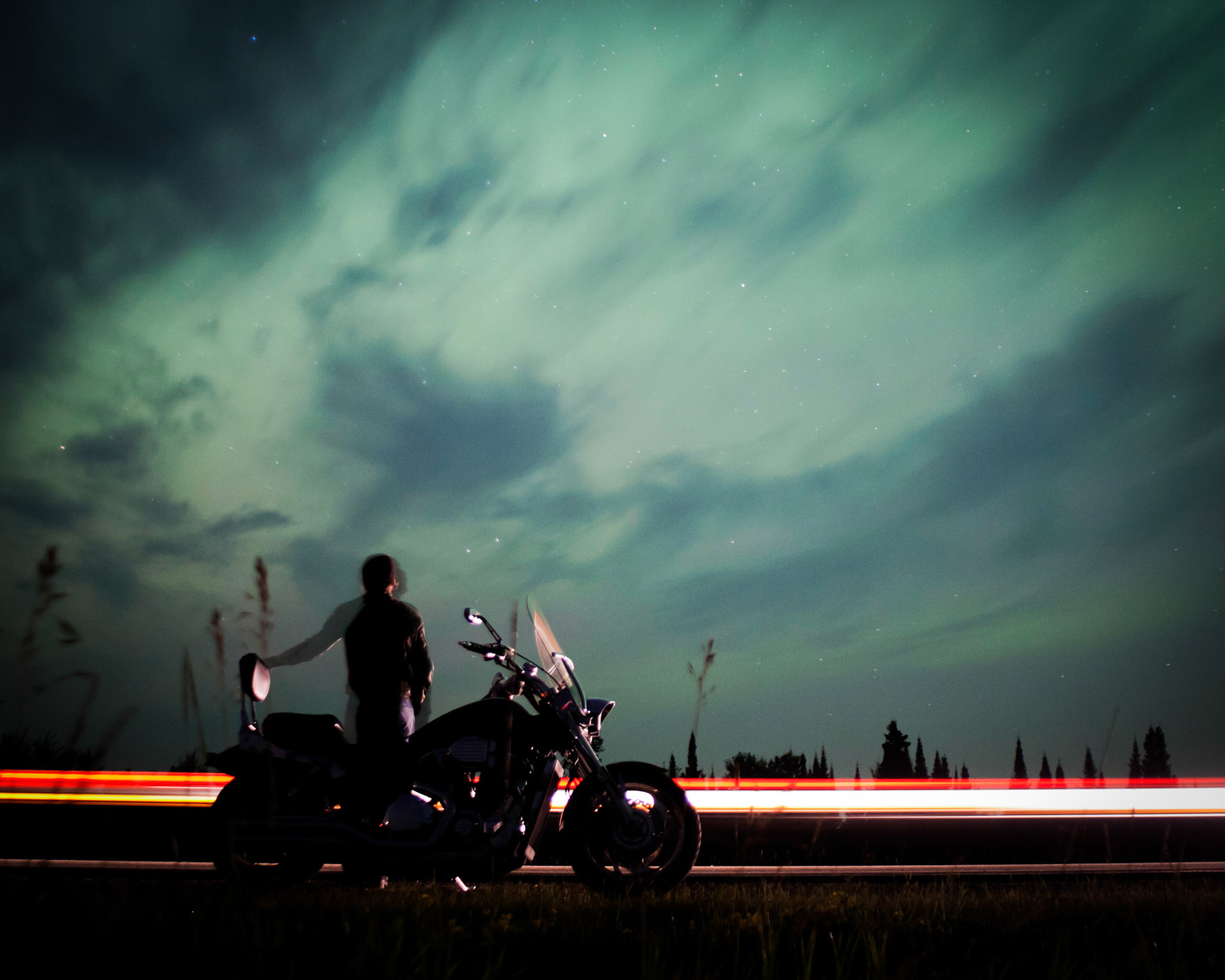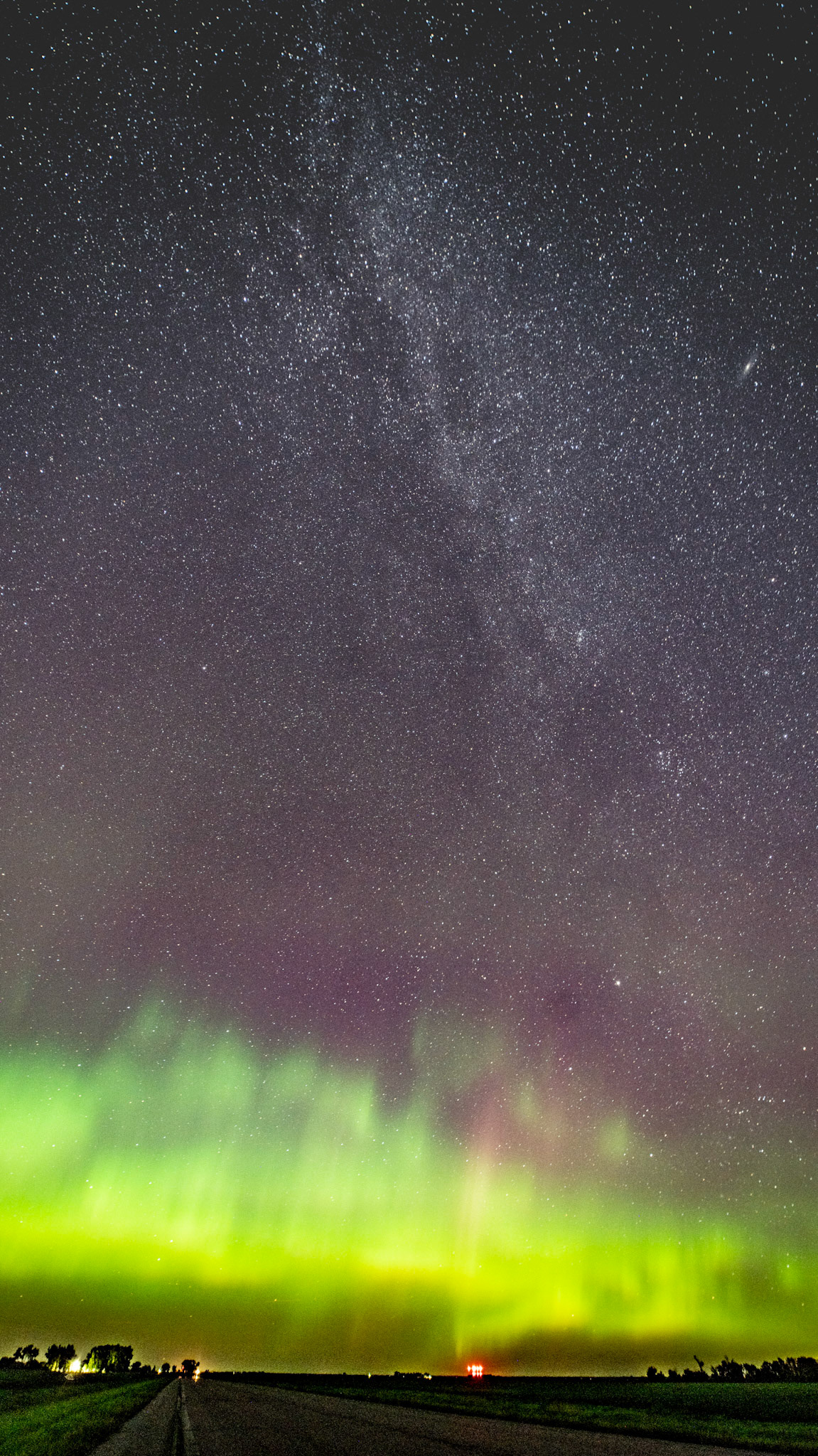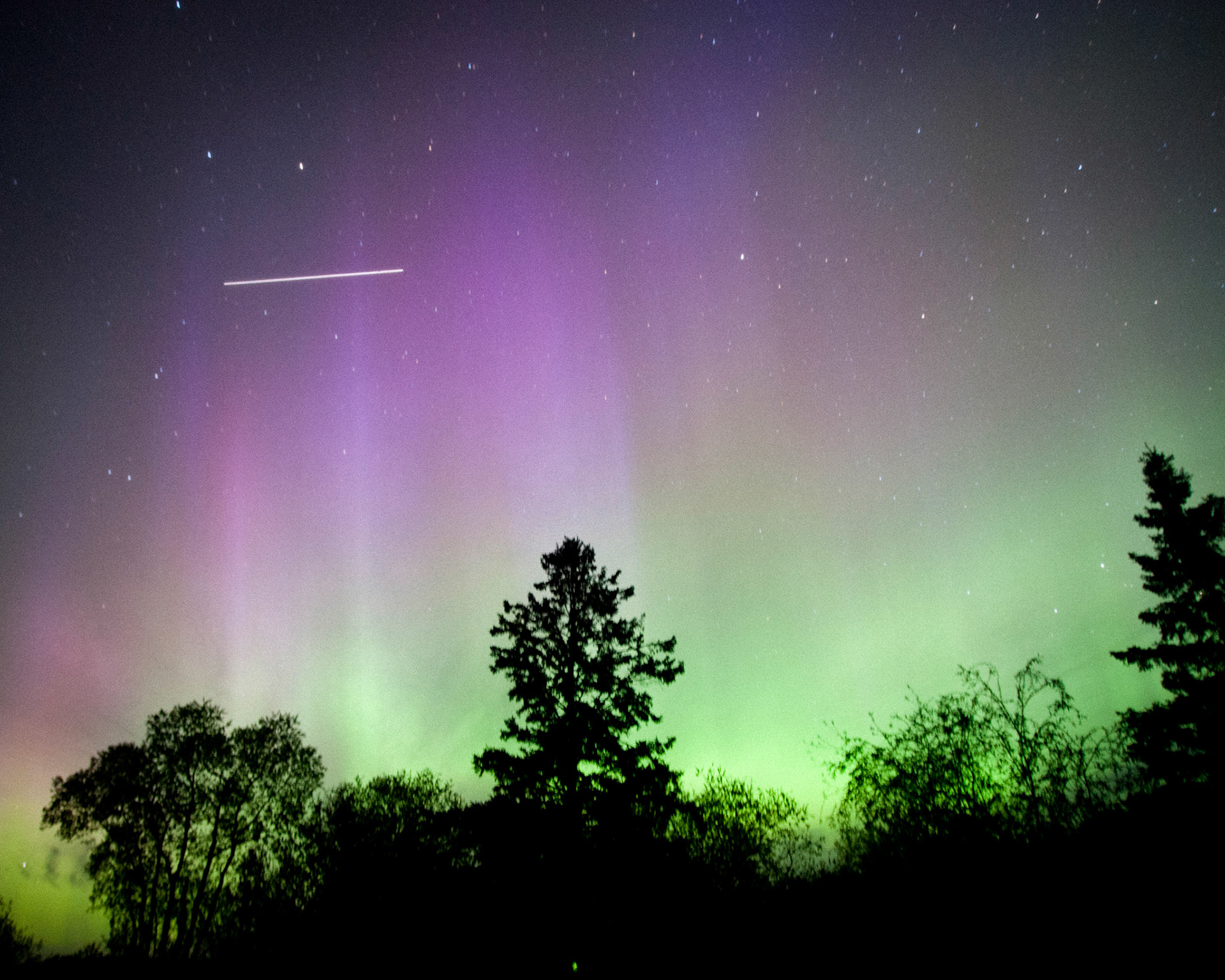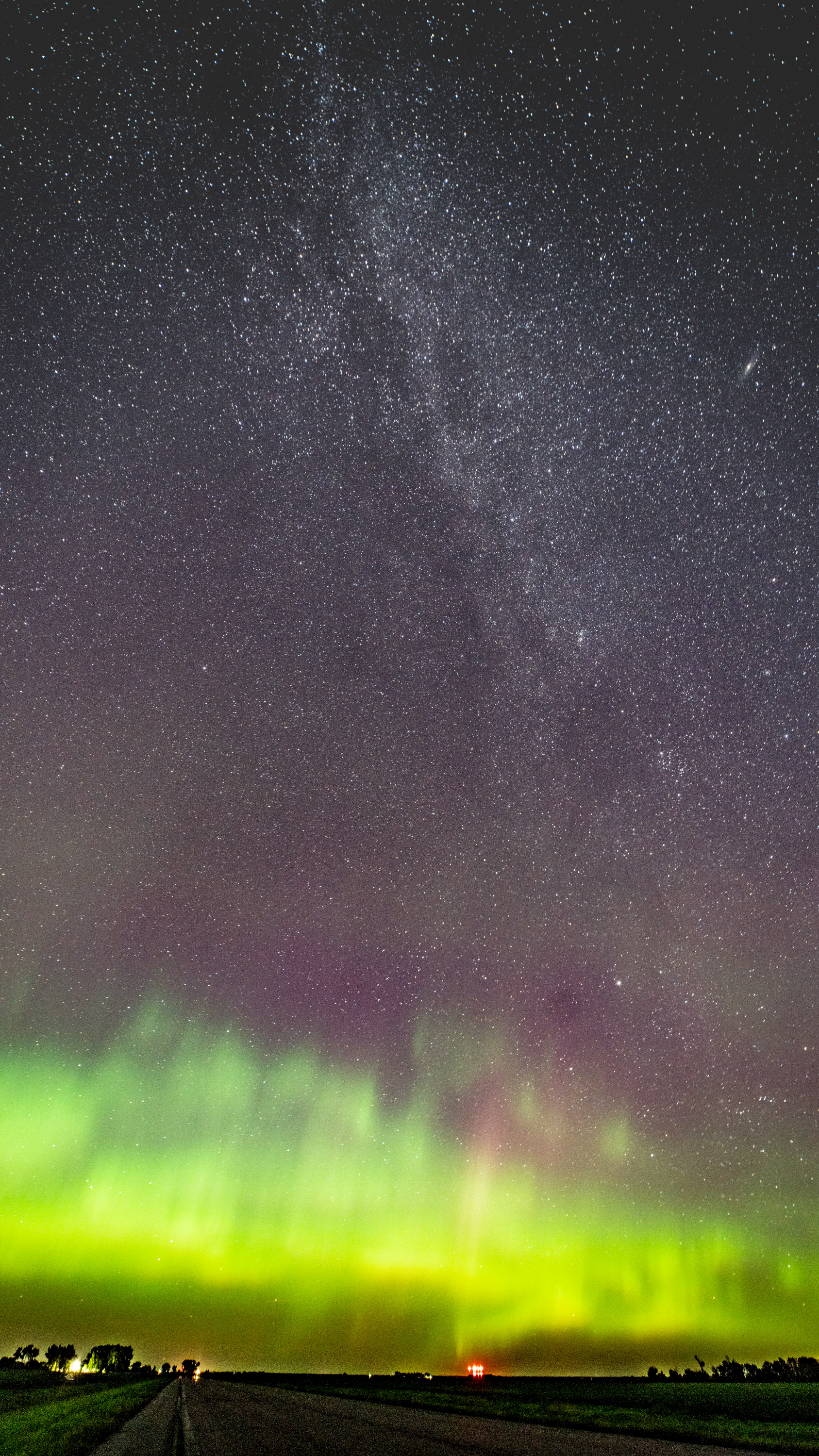
A Motorcyclist stops on the roadside to view the Aurora Borealis; or Northern Lights, near Blackduck, MN during the early morning hours of July 15 2012. These aurora displays were part of a moderate (G2) Geomagnetic Storm. Such storms can disrupt power grids and interfere with GPS signals and other satellite operations.This storm is the result of an X-1.4 solar flare launched from a sunspot on the 12th of July.

A 15 second time exposure shows the International Space Station passing above the Aurora Borealis (Northern Lights) as viewed From Blackduck Minnesota on the night of June 6th 2013. The Station; it's 250-260 mile high orbit flies well above the Aurora that is caused by the interaction of charged particles and the upper atmosphere at an altitude of 80 to 200 miles. Photo by Justin Dernier









